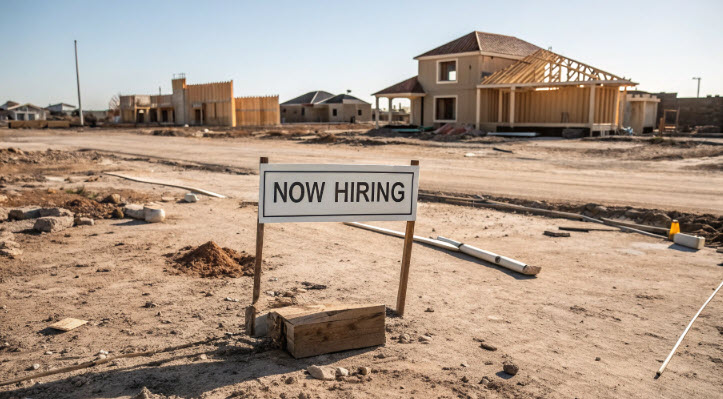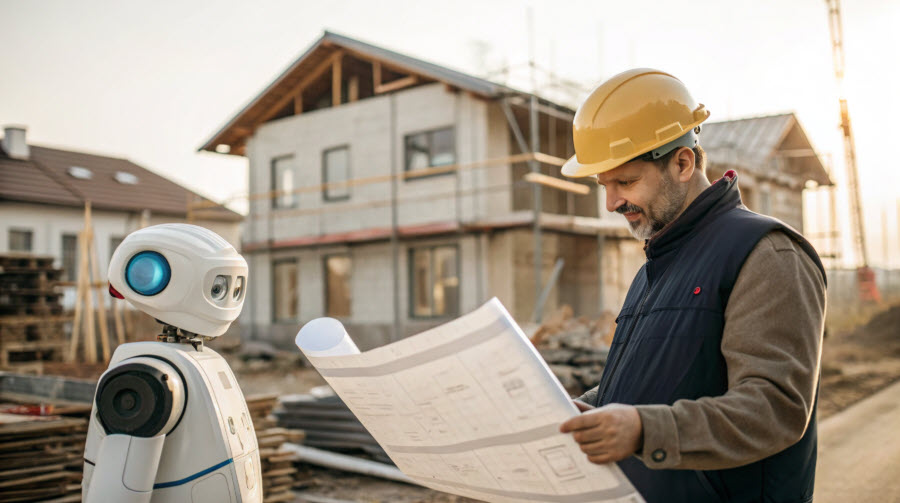The construction industry is a cornerstone of economic development, shaping the infrastructure that underpins our daily lives.
However, professionals in this sector are currently navigating a challenging landscape. From significant labor shortages and economic volatility to the rapid advancement of technology and persistent safety concerns, these issues collectively threaten the stability and growth of construction careers.
This article delves into these pressing challenges, offering insights and strategies to help industry professionals effectively address and overcome them.

Labor Shortages in the Construction Industry
The construction sector is grappling with a significant labor shortage, which poses substantial risks to ongoing and future projects. This shortage is primarily driven by an aging workforce, with many seasoned professionals retiring and insufficient young workers entering the field. The COVID-19 pandemic exacerbated this issue, leading to many reevaluating career paths and further diminishing the labor pool.
The implications of this shortage are far-reaching. Projects face delays due to the unavailability of skilled labor, and the increased demand for the limited workforce drives up labor costs. Additionally, the reliance on a smaller pool of workers can lead to burnout and decreased productivity, further hindering project timelines and quality.
The industry must implement strategic solutions to mitigate these challenges. Attracting younger talent is crucial, and this can be achieved through enhanced outreach and education about the benefits and opportunities within construction careers.
Investing in comprehensive training and apprenticeship programs will equip new entrants with the necessary skills, ensuring a competent future workforce. Moreover, diversifying recruitment efforts to include underrepresented groups can broaden the talent pool, bringing fresh perspectives and skills.
By proactively addressing the labor shortage through these strategies, the construction industry can work towards stabilizing its workforce, ensuring the successful completion of projects, and maintaining its vital role in economic development.

Economic Uncertainty in the Construction Industry
The construction industry is susceptible to economic fluctuations, and recent times have underscored this vulnerability. Economic uncertainties, driven by inflation, high interest rates, and geopolitical tensions, have significantly impacted construction activities.
For instance, in January 2025, UK construction companies experienced a sharp decline in activity, marking the first contraction in nearly a year. The S&P Global Purchasing Managers’ Index (PMI) for the construction sector dropped from 53.3 in December to 48.1, falling below economists’ forecasts. Companies attributed the downturn to economic uncertainty and delayed decisions on major projects.
In the United States, the construction sector has faced similar challenges. Inflation, high interest rates, labor shortages, and geopolitical uncertainties continue to present challenges. Despite these obstacles, the economy has maintained its resilience, supported by strong consumer spending and public investments in infrastructure. However, specific sectors, like commercial and office space, will continue to encounter difficulties in 2024.
These economic challenges have tangible effects on construction projects. A survey conducted in June 2024 found that 70% of respondents reported experiencing construction delays over the last three months. This marks the fourth consecutive quarter of decline in reported delays, suggesting an improving environment, yet construction delays remain highly expected.
To navigate these uncertainties, construction firms must adopt proactive strategies. Implementing robust financial planning and risk management practices can help mitigate the impacts of economic volatility. Diversifying portfolios to include a mix of project types and geographies can also provide a buffer against localized economic downturns. Additionally, strengthening relationships with clients and stakeholders can lead to more stable project pipelines, even amid economic fluctuations.
By staying vigilant and adaptable, construction professionals can better manage the challenges of economic uncertainty and continue to thrive in a fluctuating market.

Technological Advancements and Safety Concerns in Construction
The construction industry is experiencing a transformative phase, with technological advancements reshaping traditional practices. While these innovations offer numerous benefits, they raise common professional questions and concerns.
Embracing New Technologies
Modern construction technologies, such as Building Information Modeling (BIM), 3D printing, and drone use, are revolutionizing project planning and execution. BIM allows for detailed digital representations of building projects, enhancing collaboration and reducing errors. 3D printing is used to create building components efficiently, potentially reducing construction time and costs. Drones provide aerial site inspections, improving monitoring and safety assessments.
Addressing Safety Concerns
Despite these advancements, safety remains a paramount concern. Common hazards in construction include falls, equipment-related injuries, and exposure to harmful substances. Implementing comprehensive safety protocols, regular training, and utilizing technology for real-time hazard detection can mitigate these risks.
Balancing Innovation with Practicality
While adopting new technologies can enhance efficiency, balancing innovation with practical considerations is essential. Ensuring that the workforce is adequately trained to use the latest tools and systems is crucial.
Additionally, evaluating the cost-benefit ratio of implementing advanced technologies helps make informed decisions that align with project goals and budgets.
By integrating technological advancements and maintaining rigorous safety standards, the construction industry can navigate the challenges of modernization while safeguarding its workforce.

Future Trends in Construction Careers
The construction industry is undergoing significant transformations driven by technological advancements, sustainability initiatives, and evolving workforce dynamics. Staying informed about these trends is crucial for professionals who navigate and thrive in this changing landscape.
Technological Integration
The adoption of advanced technologies is reshaping construction methodologies. Key developments include:
- Building Information Modeling (BIM): Enhances project visualization and collaboration among stakeholders.
- Drones: Utilized for site surveys, progress monitoring, and safety inspections, improving efficiency and accuracy.
- Artificial Intelligence (AI): Assists in project planning, risk assessment, and resource management, leading to more informed decision-making.
Embracing these technologies can increase efficiency, cost savings, and improved project outcomes.
Sustainability and Green Building
There is a growing emphasis on sustainable construction practices driven by environmental concerns and regulatory requirements. These include the use of eco-friendly materials, energy-efficient designs, and waste-reduction strategies. As the industry moves towards more sustainable methodologies, professionals with expertise in green building practices are in high demand.
Workforce Demographics and Diversity
The construction workforce is experiencing demographic shifts, with an increasing focus on diversity and inclusion. Efforts are underway to attract underrepresented groups, including women and minorities, to address labor shortages and bring diverse perspectives to the industry. Promoting a more inclusive work environment can enhance innovation and problem-solving within teams.
Strategies for Career Advancement in Construction
Advancing a career in the construction industry requires a proactive approach to skill development, networking, and adaptability.
Continuous Learning and Skill Development
Investing in ongoing education is essential. Pursuing certifications, attending workshops, and enrolling in relevant courses can enhance expertise and make professionals more valuable assets to their teams. Keeping current with industry standards and technologies maintains competitiveness in the job market.
Networking and Professional Associations
Building a robust professional network can open doors to new opportunities. Engaging with industry events, joining construction associations, and participating in local and online communities can lead to valuable connections and insights from experienced professionals.
Embracing Leadership Opportunities
Taking on leadership roles can demonstrate initiative and capability, even in small capacities. Leading a team, managing a project, or mentoring junior colleagues can showcase leadership skills and pave the way for advancement into higher-level positions.
By staying informed about industry trends and actively pursuing professional development, individuals can effectively navigate the evolving construction landscape and achieve sustained career growth.
Call to Action
In navigating the complexities of today’s construction industry, professionals encounter significant challenges, including labor shortages, economic uncertainties, technological advancements, and safety concerns. Addressing these issues requires a proactive approach:
Labor Shortages: Implementing targeted recruitment and comprehensive training programs can help bridge the skills gap.
Economic Uncertainty: Robust financial planning and diversification of services can mitigate economic risks.
Technological Advancements: Embracing innovation through investment in new technologies and continuous learning ensures competitiveness.
Safety Concerns: Prioritizing safety through regular training and strict protocol adherence safeguards the workforce.
By adopting these strategies, construction professionals can effectively manage current threats and position themselves for future success. Staying informed and adaptable is crucial in this ever-evolving industry.
Stay ahead in your construction career by engaging with industry resources, participating in professional development opportunities, and embracing innovative practices. Your proactive efforts today will pave the way for a resilient and prosperous future in construction.

